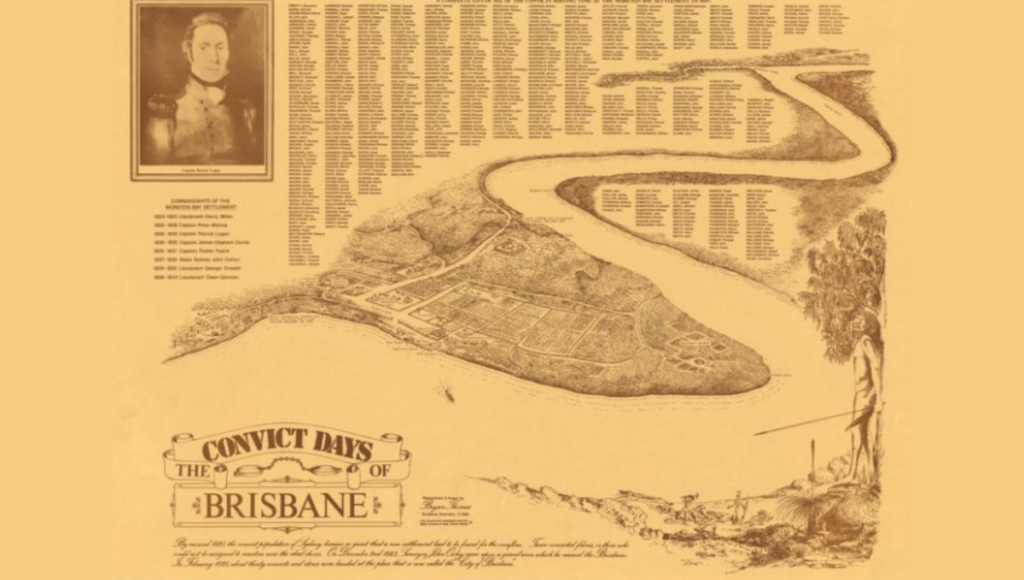It could fairly be said that some of the Redcliffe Peninsula’s first European sojourners were not exactly upstanding citizens.
The first of these rascals to intrude upon the life of the peninsula’s Ningi Ningi people were three thoroughly lost convicts, Thomas Pamphlett, Richard Parsons and John Finnegan, who had, in March 1823, left Sydney to travel to the Illawarra on a timber-getting mission. Disastrously blown off course, 101 days later, after an epic journey drifting and walking north, they came, in June, to what is now Clontarf Point where they were befriended by some Ningi Ningi men. After living and travelling with them for five months, Pamphlett and Finnegan were rescued by John Oxley in November. Parsons was separately found by Oxley the following year.
The Next Wave of Redcliffe Convicts

The next convicts to set foot on the peninsula were the 29 aboard the Amity, which arrived in September 1824 under the command of Lieutenant Miller, who was tasked with establishing a penal colony. When Redcliffe proved unsuitable for the purpose, the colony moved to the Brisbane River (which had been “discovered” and crossed by Pamphlett, Finnegan and Parsons during their trek north) in May 1825.
Among the Amity convicts who continued their sentences in the second settlement was one Thomas Mills. Mills, a thief, had arrived in Sydney on the Eliza in 1820. He was among a group who, in 1825, escaped by stealing a barge, sailing downriver and heading south along the coast. They made it to near Port Macquarie where they were recaptured. Mills was tried in Sydney and returned to Moreton Bay (again on the Amity) where he remained for another year before being sent back to Sydney. Reported to be “an incorrigible character”, he died in 1868 after a life of continued offending.
Another Amity convict who decided that the Brisbane River colony was not for him was Lewis Lazarus, a 14-year-old tailor tried in 1817 in London for stealing, and transported to Sydney, arriving in 1818. After serving time in Newcastle he was selected to embark for Moreton Bay. In the General Quarterly Return of Public Labour for the colony in 1825, Lazarus was listed as “assistant cook at prisoners’ barracks”. In 1826, he and three other convicts absconded and headed into the bush. He returned, was punished and remained in Brisbane until 1832 after over seven years at the Moreton Bay colony.
Most of the Amity convicts were returned to Sydney, many to reoffend and continue incarceration elsewhere, their time at Redcliffe and Brisbane clearly far from rehabilitative.
Read more stories from our Redcliffe Guide print magazine here:
- Reddy Roundup: Updates from the Community
- What’s Hot Around Town
- The Scoop on Poop
- Redcliffe Museum Launches Interactive Space Exhibition
- Jan Set to Raise the Barbell
- Headspace Redcliffe Celebrates a Decade of Support for Youth
- Local School Develops Future NRL Stars
- Everything You Want to Know About Dying But Are Too Afraid to Ask
- Local Dragon Boat Team Shines at State Championships
- AbiliTV Airs a Worthy Story
With thanks to MBRC , Image courtesy of John Oxley Library, image no. 503-968-s0001
